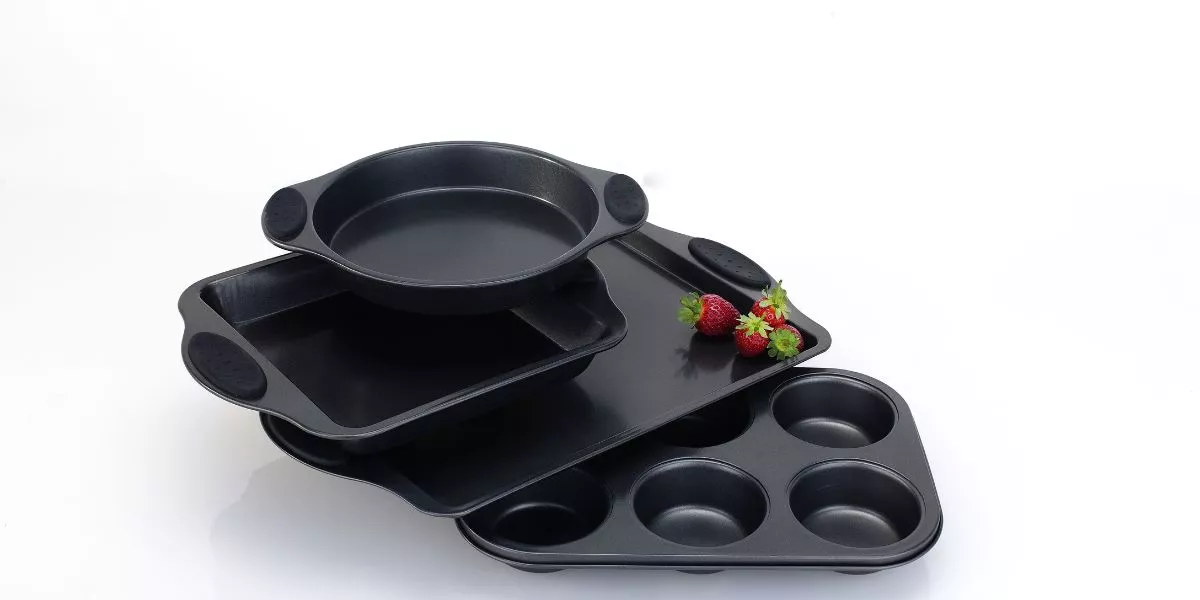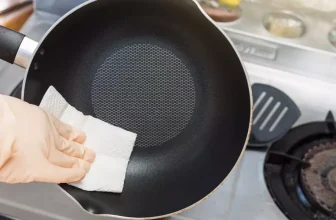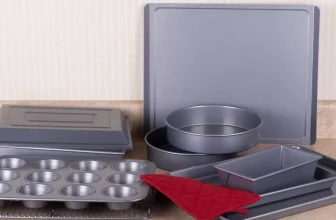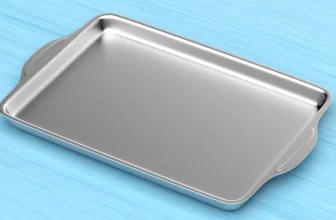
When it comes to ensuring the safety of your bakeware, being aware of potential risks is crucial. From the materials used to the wear and tear signs to watch out for, it's essential to stay informed. By understanding the key factors that determine the safety and non-toxicity of your bakeware, you can make informed decisions that will positively impact your health and the quality of your baked goods.
Understanding Bakeware Materials
When choosing bakeware, prioritize materials that are safe for your health and the environment. Opt for materials like stainless steel, glass, and silicone, as they're non-toxic and don't leach harmful chemicals into your food. Stainless steel is durable, non-reactive, and easy to clean, making it a versatile choice for baking a variety of dishes.
Glass bakeware is another excellent option, as it's free from harmful chemicals like BPA and phthalates found in some plastics. It's also transparent, allowing you to monitor your baking progress easily.
Silicone bakeware has gained popularity due to its flexibility, non-stick properties, and heat resistance. However, ensure that the silicone used is of high quality and food-grade to avoid any potential health risks. Avoid bakeware made from materials like non-stick coatings containing PTFE and PFOA, as they can release toxic fumes at high temperatures.
Recognizing Warning Signs
Look out for key indicators that signal potential hazards in your bakeware. When inspecting your bakeware, be on the lookout for any signs of wear and tear such as scratches, chips, or peeling coatings. These imperfections can expose you to harmful chemicals that may leach into your food during baking. Additionally, discoloration or rust on metal bakeware could be a red flag, indicating corrosion that could contaminate your food.
Another warning sign to watch for is a strong chemical odor emanating from your bakeware, especially when it's heated. This could indicate the presence of harmful substances that could transfer to your food. If you notice any unusual smells while baking, it's best to discontinue using that bakeware.
Furthermore, be cautious of bakeware that warps or bends easily, as this could be a sign of low-quality materials that may not be safe for baking at high temperatures. Keep an eye out for these warning signs to ensure the safety and non-toxicity of your bakeware.
Testing for Toxicity
Ensure the safety of your bakeware by conducting tests to determine its toxicity levels. Testing for toxicity involves various methods to assess if harmful substances are present in your bakeware materials. One common test is the lead test, which checks for lead contamination in ceramic, porcelain, or enamel-coated bakeware. This is crucial as lead exposure can lead to serious health issues.
Another important test is the cadmium test, especially for colorful glazes on ceramics. Cadmium is a toxic metal that can leach into food when exposed to acidic substances. By conducting this test, you can prevent potential cadmium exposure.
Furthermore, consider testing for the presence of perfluorooctanoic acid (PFOA) in non-stick bakeware. PFOA has been linked to adverse health effects, so ensuring its absence is essential for your well-being.
Regularly testing your bakeware for toxicity is a proactive way to safeguard your health and that of your loved ones. By being aware of potential toxic elements, you can make informed decisions about the bakeware you use in your kitchen.
Ensuring Safety Practices
To prioritize safety in your bakeware usage, establish consistent habits that promote well-being. Start by always using oven mitts or pot holders when handling hot bakeware to prevent burns or accidents. Make sure to place hot pans on heat-resistant surfaces to avoid damage to countertops or tables.
When cleaning your bakeware, opt for gentle detergents and avoid harsh scrubbing tools that could scratch or damage the surfaces. Additionally, ensure that your bakeware is completely dry before storing it to prevent rust or mold growth.
Another crucial safety practice is to regularly inspect your bakeware for any signs of wear and tear. Check for chipped enamel, rust spots, or warped surfaces, as these can affect the safety and performance of your bakeware. Replace any damaged items promptly to avoid potential hazards while cooking or baking.




